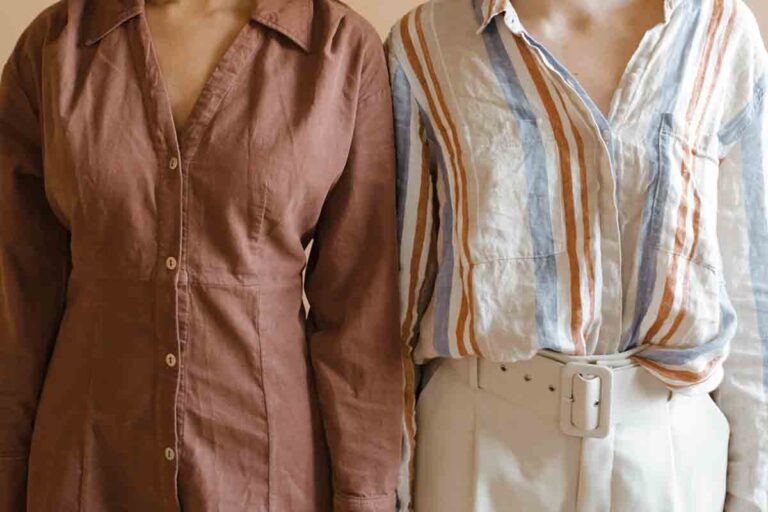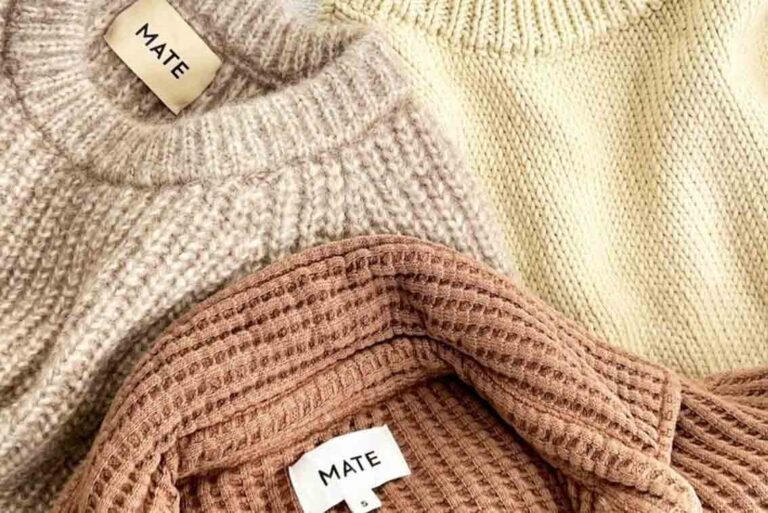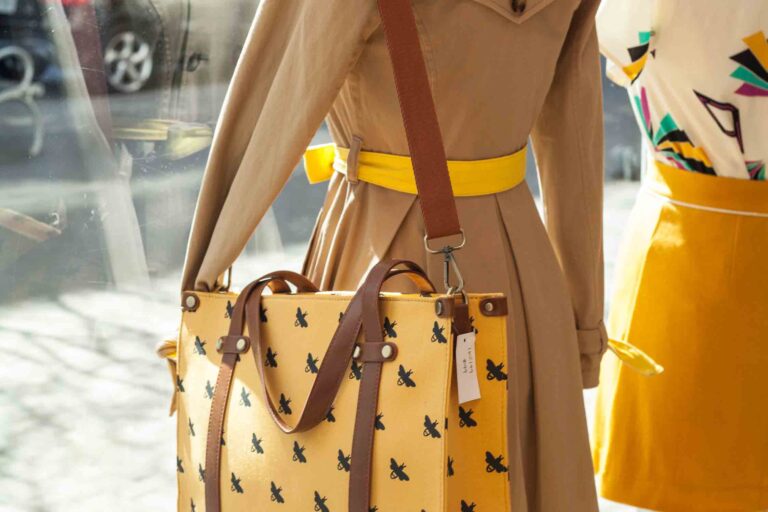When I first started learning about sustainable fashion, I eagerly purchased vegan leather boots, glad to find more eco-friendly footwear.
But, it didn’t take long before I regretted that decision.
My disappointment led me to look a little closer at what I had even purchased in the first place. And unfortunately, I wasn’t all too pleased.
Vegan leather can be an eco-friendly fashion option, but if you raise an eyebrow after seeing it promoted in fast-fashion stores as an eco-friendly option, you’re not alone. What can be a sustainably minded alternative also comes with its own environmental challenges.
So, what exactly are those issues, and how can we find vegan leather options that actually live up to the eco-friendly claim?

What Is Vegan Leather Made From?
Vegan leather, an alternative to traditional leather, is created from either synthetic or plant-based materials.
Vegan leather is a broad category, and the different types come with very different stories. Most commonly, vegan leather is made from PVC and polyurethane, which are derived from fossil fuels and pose long-term environmental challenges. These plastic vegan leathers are made by fusing liquid plastic on top of a fabric backing that’s stamped with a leather-looking texture.
Beyond synthetic options, vegan leather can be crafted from natural, plant-based sources such as cork, paper, and cactus.
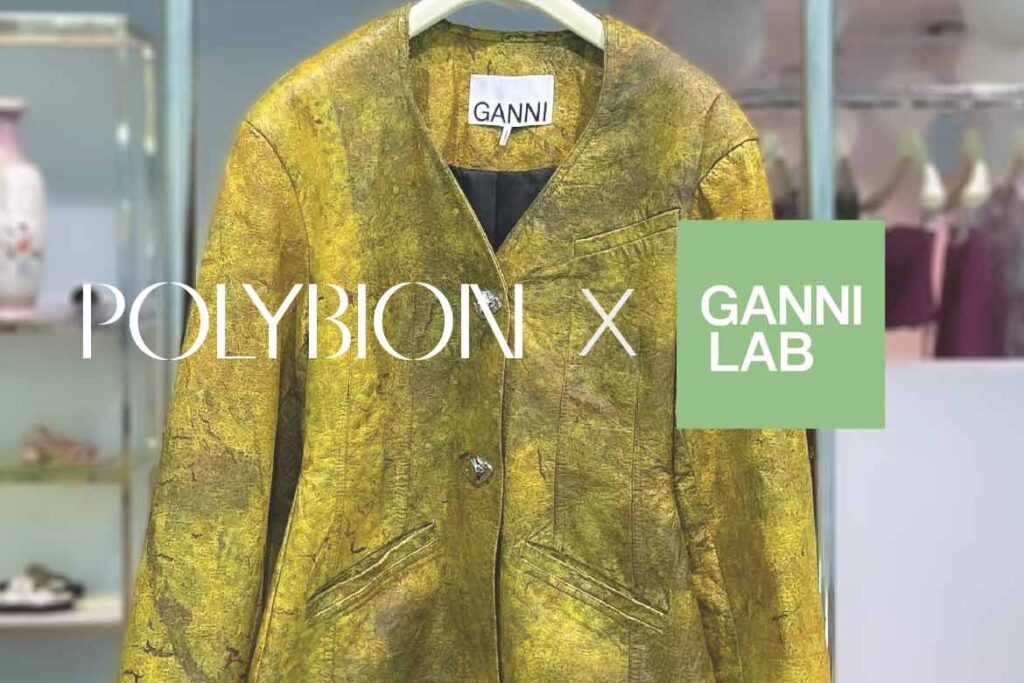
Additionally, some labs are starting to “grow” their own leather alternatives, like Polybion, which uses fermented food waste. These innovative materials are part of an effort to provide more sustainable and environmentally friendly alternatives to their plastic or animal-based counterparts.
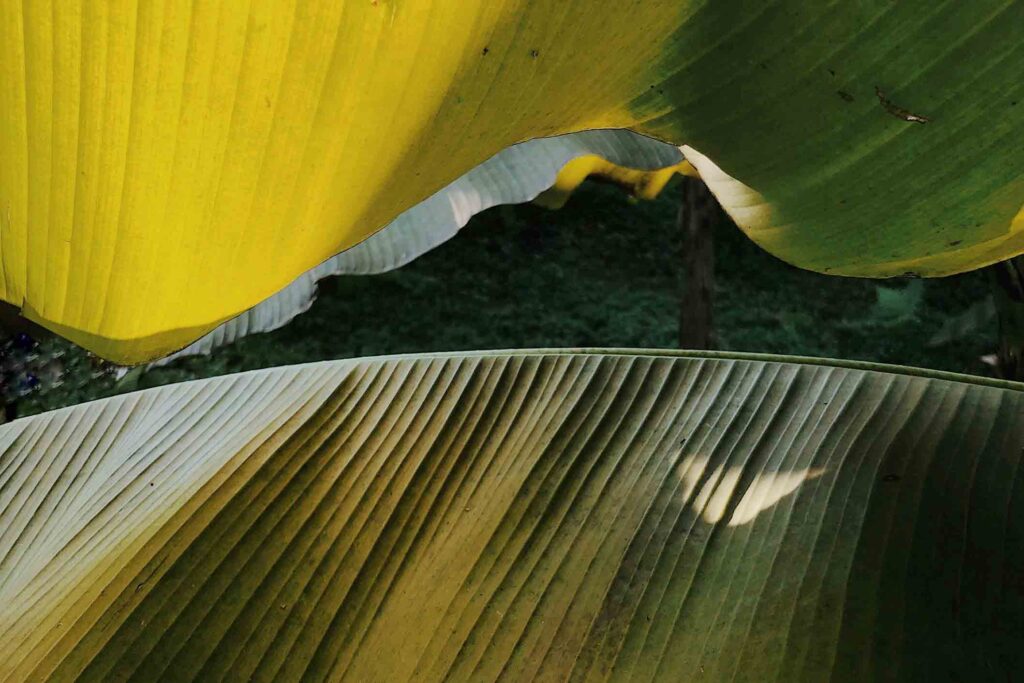
Is Vegan Leather Sustainable?
While synthetic faux leather provides an animal-free alternative to traditional leather, its production and disposal processes introduce serious environmental and health issues.
Fossil Fuel Reliance
Synthetic faux leathers, primarily made from polyvinyl chloride (PVC) or polyurethane, are sourced from fossil fuels. PVC comes from petrochemicals, refined petroleum or natural gas.

Fossil fuel reliance leads to land degradation, pollution of wildlife ecosystems, water and air pollution, and are a major contributor to global warming, among other issues.
Health and Safety Concerns in Production
PVC, the most commonly used source of vegan leather, requires phthalates, a group of chemicals, to make it durable.
These chemicals have negative impacts on health, as they are known endocrine disruptors and can impact organ health, fertility, and other health issues.
However, these additives are highly toxic, posing substantial health risks to both humans and the environment. In several countries, the use of phthalates in PVC is limited or entirely banned due to their hazardous nature.
The production process of synthetic vegan leather often exposes workers to these dangerous chemicals as well.
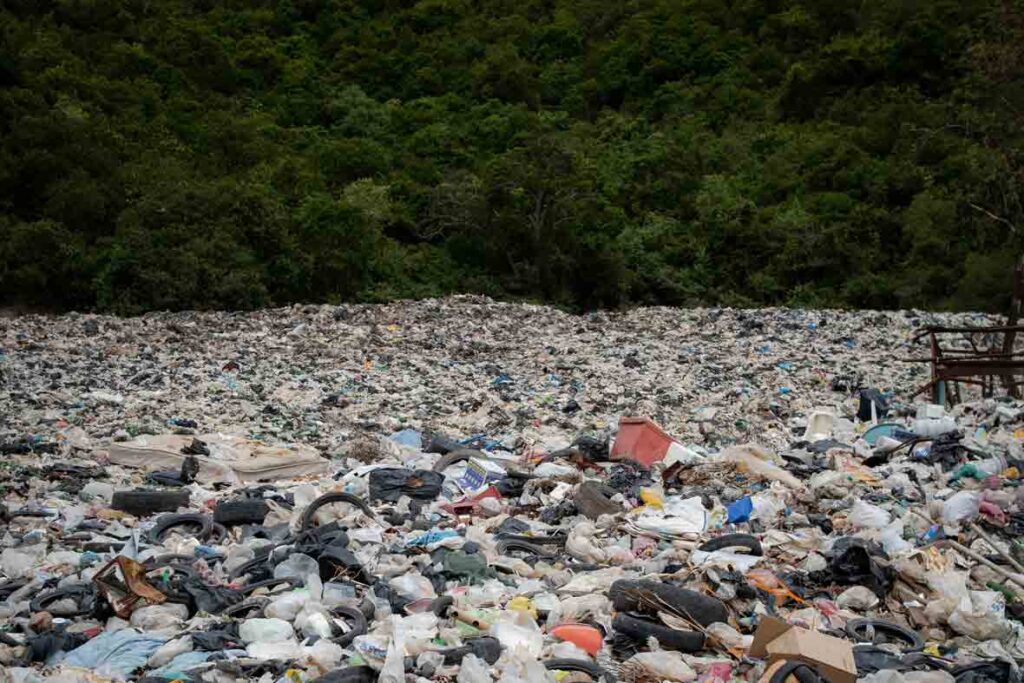
Partial Biodegradability and Ecological Impact
Synthetic vegan leathers do not decompose fully. As they break down, they release toxic particles and phthalates into the environment, causing harm to wildlife and disrupting ecosystems. Phthalates are now global pollutants, and can be found deep in the ocean, the air, and even in our bodies,
Use of Chemicals in Plant-Based Vegan Leathers
Plant-based vegan leathers are creating options that are both animal free and plastic free. That said, it is not yet a perfect solution.
As these plant-based leathers are still relatively new, some still rely on various chemicals as binding agents or are mixed with plastic materials to create the final product, which potentially lowers its environmental benefit.
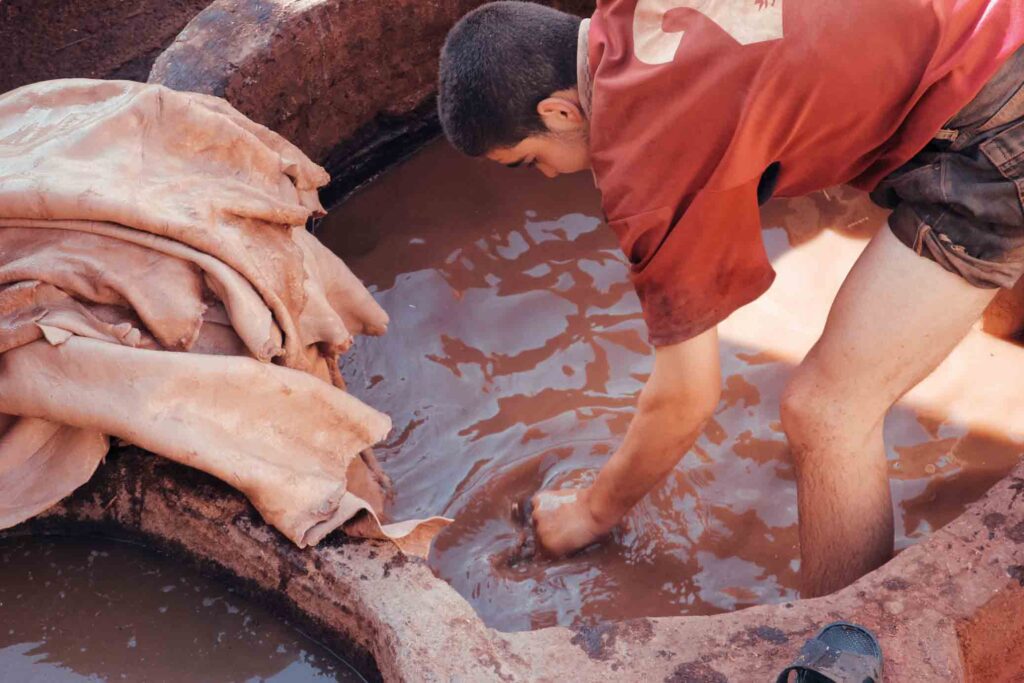
What’s the Issue with Real Leather?
The leather industry, often considered a sustainable by-product of meat production, has a significant environmental impact. Leather is more accurately a co-product of the meat industry, with a substantial carbon footprint. It contributes to deforestation, notably in critical areas like the Amazon rainforest, which absorbs 25% of the Earth’s CO2 and hosts vast biodiversity.
Approximately 38% of the world’s habitable land is used for livestock, and in the past 50 years, about 12% of the Amazon has been converted to cattle pastures.
Leather also heavily relies on chromium tanning, which leads to water and air pollution, posing health risks to workers and the environment. This method results in dumping of waste containing chromium, harming water streams, agriculture, livestock, and wildlife.
In leather-producing regions like Kanpur, India, the industry has caused significant water and pollution issues, with the Ganges River being notably affected.
The leather production process is also water-intensive, requiring around 8,000 liters per pair of leather shoes, primarily during the tanning stage.

Vegan Leather Greenwashing
When it comes to greenwashing, the term for brands using marketing to appear environmentally friendly, vegan leathers are one of the worst offenders.
What is now called “vegan leather,” a shinier, more eco-friendly sounding term for faux leather, used to be known simply as “pleather,” or “plastic-leather.”
In 2021, H&M launched their ‘Co-Exist Story’ line, branding it as a sustainable and 100% vegan clothing collection. This launch was a part of H&M’s broader initiative to introduce more animal-friendly and eco-conscious fashion choices. The collection, which included womenswear, menswear, and kidswear, was approved by PETA and advertised the use of innovative materials, including plant-based leather.

However, the sustainability claims of this collection are subject to scrutiny. While the partial use of plant-based materials like Vegea (derived from grapes) points towards a more eco-friendly approach, many of those plant-based vegan leathers used were coated in polyurethane and lined with polyester, both of which are plastic-based materials.
This raises questions about the actual sustainability of the collection, considering the environmental impact of plastics and their derivatives.
This move by H&M reflects a larger trend in the fashion industry where brands are trying to balance the demand for more ethical and sustainable products with the challenges of truly eco-friendly manufacturing processes.
[Related article: Fast Fashion vs Sustainable Fashion: Understanding the Key Differences]
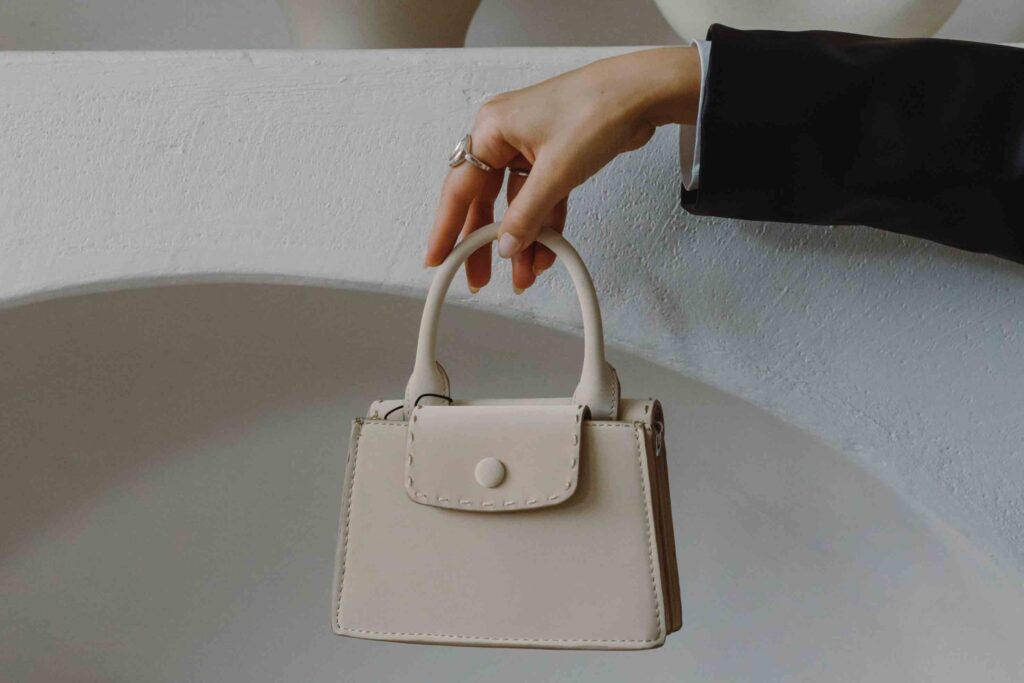
6 Ways to Ensure Your Vegan Leather is Ethically Sourced
Although no option is perfect, with this better understanding of what to look out for, we can use these six ways to more sustainably embrace vegan leathers as part of a sustainable wardrobe:
- Research the material: Research the specific materials used in the vegan leather to ensure they are sustainable and environmentally friendly. Know the difference between plant-based and PVC, and research the brand to avoid supporting greenwashing.
- Check for Certifications: Look for products with sustainability certifications like Global Recycled Standard or OEKO-TEX Standard.
- Ensure Supply Chain Transparency: Choose brands that openly share their supply chain and manufacturing processes, emphasizing ethical labor practices. Ensure the manufacturing of vegan leather doesn’t involve exploitative working conditions.
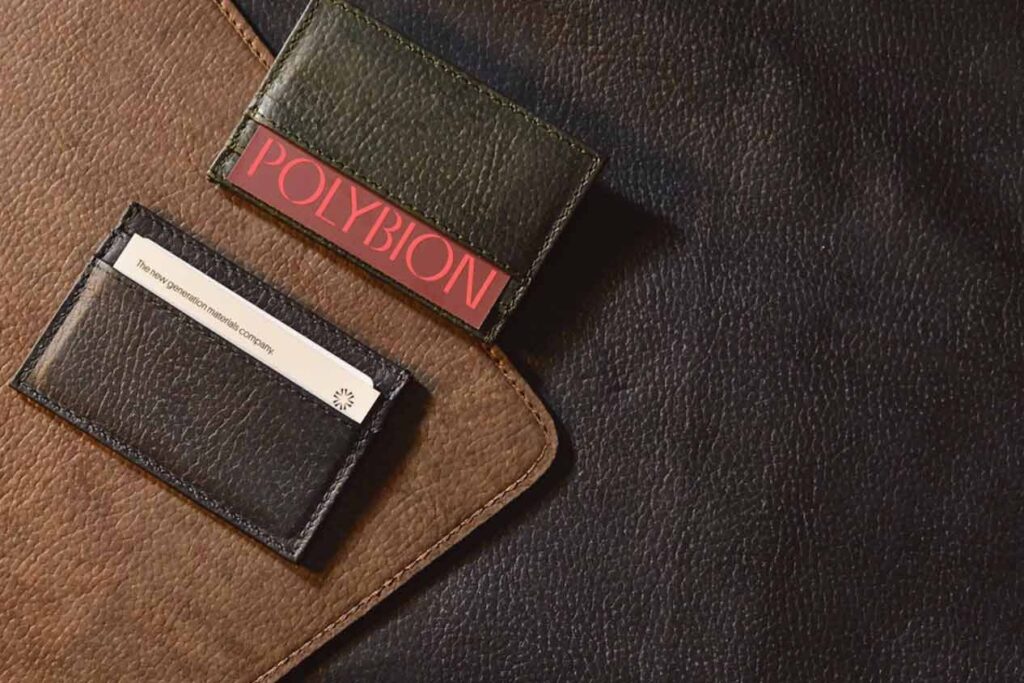
- Support Innovation: Opt for vegan leather made from innovative and less harmful materials like pineapple leaves, cork, or mushrooms. Thought they still might use chemicals, many of these brands are actively working to improve and could lead to a brighter future for all.
- Assess for durability and quality: One of the major drawbacks to many vegan leathers as they compare to animal leather is the durability. Especially for vegan leatehrs made of PVC, a shorter life span means more plastic in landfills.
- Assessing the durability aof the product by reading reviews and checking it out in person for quality, as well as reading about the recyclability of the product, can help you understand its overall environmental impact.
- Support ethical brands: Though there is no perfect solution, supporting companies that are committed to continuous improvement in sustainable practices and ethical sourcing is the best bet when it comes to finding the most ethical and eco-friendly options. Good On You is a great resource for searching for brands to see how they are rated in terms of environmental, animal, and worker welfare.
3 Ethical Vegan Leather Brands to Support

Will’s Vegan Shoes are a premium vegan leather product. Their faux leather products are largely bio-based, carbon neutral certified, and includes a return to recycling service to properly dispose of them after their life.
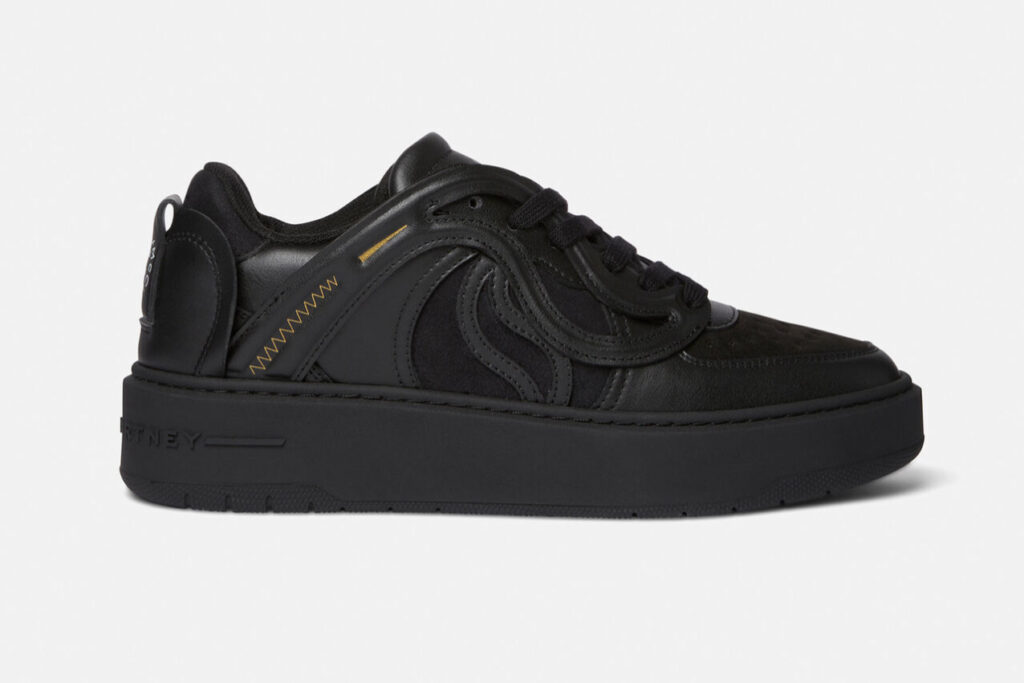
Stella McCartney, known for luxurious vegan handbags, uses innovative materials like VEGEA (grape-based leather) and Mylo™ (mushroom leather) to make their faux leather, showcasing a commitment to sustainability

Svala crafts handbags in LA with materials sourced from Europe, including Piñatex® (pineapple leather) and MIRUM®, and includes high transparency in their sourcing.
Wrapping Up
Vegan leather, in its quest to provide an animal-friendly alternative, opens up a new door for innovation and ethical fashion. Yet, beneath its surface, we find complexities—from the environmental toll of synthetic materials like PVC and polyurethane to the budding potential of plant-based alternatives like cork, kelp, and even apples.
As sustainable design advocates, we must look a layer deeper than simple marketing and examine the true nature of the products we endorse. While no solution is perfect, our collective efforts in seeking out and supporting ethically sourced vegan leather can help us avoid fast fashion and sow the seeds for a more sustainable fashion industry.
FAQ:
Are vegan leather, pleather, faux leather and fake leather the same?
Vegan leather, pleather, faux leather, and fake leather are terms often used interchangeably to describe alternatives to real leather. While they all serve the same purpose of mimicking real leather, there are subtle differences:
- Vegan leather is a broad term for all non-animal based leathers, emphasizing the absence of animal products.
- Pleather, a portmanteau of ‘plastic leather,’ is specifically made from plastic materials.
- Faux leather is a general term for imitation leather of any kind, and fake leather is another way to describe any synthetic leather.
Despite these nuanced differences, vegan, faux, fake and pleather all represent a category of materials designed to replicate the look and feel of real leather without using animal hides.
How do you maintain or repair vegan leather?
Though it varies by type (synthetic or plant-based), most vegan or faux leather can be cleaned gently with a soft cloth and a mild detergent solution. Avoiding harsh chemicals that can damage the material. It’s important to keep vegan leather away from extreme heat and direct sunlight, as these can cause cracking and fading.
For repairs, small scratches can often be buffed out with a soft cloth, while larger tears might need a professional touch or a vegan leather repair kit, which typically includes fillers and colorants to mend the damage seamlessly.
Unlike traditional leather, vegan and faux leather doesn’t need conditioning; however, using a fabric protector can help in repelling stains and extending its life.


